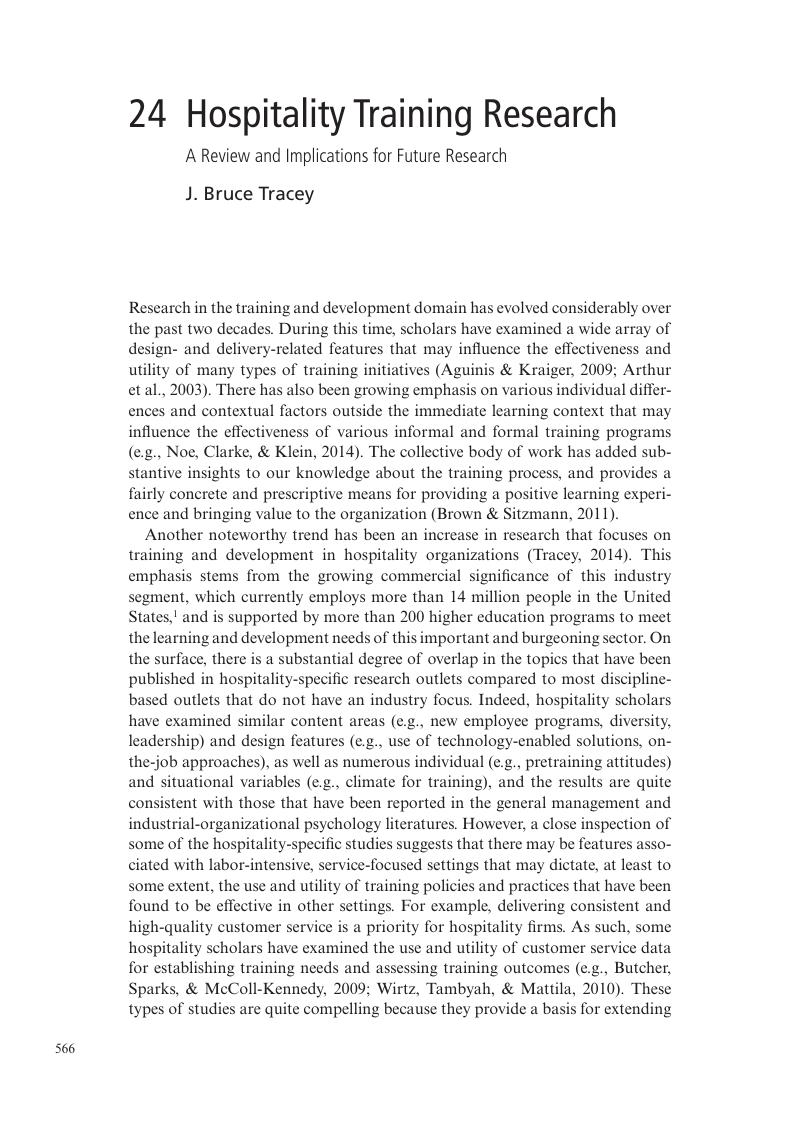Book contents
- The Cambridge Handbook of Workplace Training and Employee Development
- The Cambridge Handbook of Workplace Training and Employee Development
- Copyright page
- Dedication
- Contents
- Figures
- Tables
- Contributors
- Miscellaneous Frontmatter
- Preface
- 1 Introduction and Overview
- Part I Fundamental Issues in Learning and Transfer
- Part II Understanding the Learner
- Part III Designing the Intervention
- Part IV Special Topics
- Part V Workplace Learning from Other Lenses
- 22 Training from the Perspective of Human Resource Development and Industrial-Organizational Psychology
- 23 Strategic Training and Development and Their Role in Shaping Competitive Advantage
- 24 Hospitality Training Research
- 25 Informal Learning
- 26 An Operations Management Perspective on Employee Training and Workforce Planning
- 27 Workplace Training from the Sociological Perspective
- Index
- References
24 - Hospitality Training Research
A Review and Implications for Future Research
from Part V - Workplace Learning from Other Lenses
Published online by Cambridge University Press: 30 October 2017
- The Cambridge Handbook of Workplace Training and Employee Development
- The Cambridge Handbook of Workplace Training and Employee Development
- Copyright page
- Dedication
- Contents
- Figures
- Tables
- Contributors
- Miscellaneous Frontmatter
- Preface
- 1 Introduction and Overview
- Part I Fundamental Issues in Learning and Transfer
- Part II Understanding the Learner
- Part III Designing the Intervention
- Part IV Special Topics
- Part V Workplace Learning from Other Lenses
- 22 Training from the Perspective of Human Resource Development and Industrial-Organizational Psychology
- 23 Strategic Training and Development and Their Role in Shaping Competitive Advantage
- 24 Hospitality Training Research
- 25 Informal Learning
- 26 An Operations Management Perspective on Employee Training and Workforce Planning
- 27 Workplace Training from the Sociological Perspective
- Index
- References
Summary

- Type
- Chapter
- Information
- Publisher: Cambridge University PressPrint publication year: 2017



